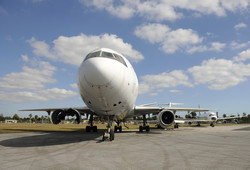Recycling polymer aerospace composites
Laser-induced breakdown spectroscopy (LIBS) is an emerging technique that enables rapid chemical analysis of a wide range of materials, including metals and plastics. It has received increased interest as a result of the development of compact and in some cases handheld systems for use in the field. This development has been made possible by the availability of compact and industrial-grade laser systems and spectrometers. An EU-funded project exemplified this trend to open new opportunities for the deployment of LIBS in efficient polymer composites sorting for recycling. Researchers working on the LIBSAC (Laser induced breakdown spectroscopy for identification of aerospace composites) project have shown how the new class of lasers with multi-kilohertz pulse repetition rates can reduce the footprint of a LIBS system. More importantly, LIBS can be combined with Raman spectroscopy. In those cases where one technique is ineffective, the other complementary technique can be used instead. For development of a Raman-LIBS spectrometer, researchers worked closely with the RASAC project team. Furthermore, a comprehensive database with spectral properties of polymer composite constituents was compiled. This could serve as a reference point for high-speed identification of a wide range of materials likely to be obtained from recycling aircraft components. Over the past years, thousands of obsolete aircraft have been sitting in 'graveyards' while the demand for polymer composites continues to increase. But aircraft at the end of their life provide a large source of valuable materials. It is clearly in the aerospace industry's best interest to maximise the amount of recycled materials. The LIBSAC project has identified the most efficient means of cost-effectively recycling polymer composites. The practicality of new approaches is expected to make aerospace structure recycling attractive.







